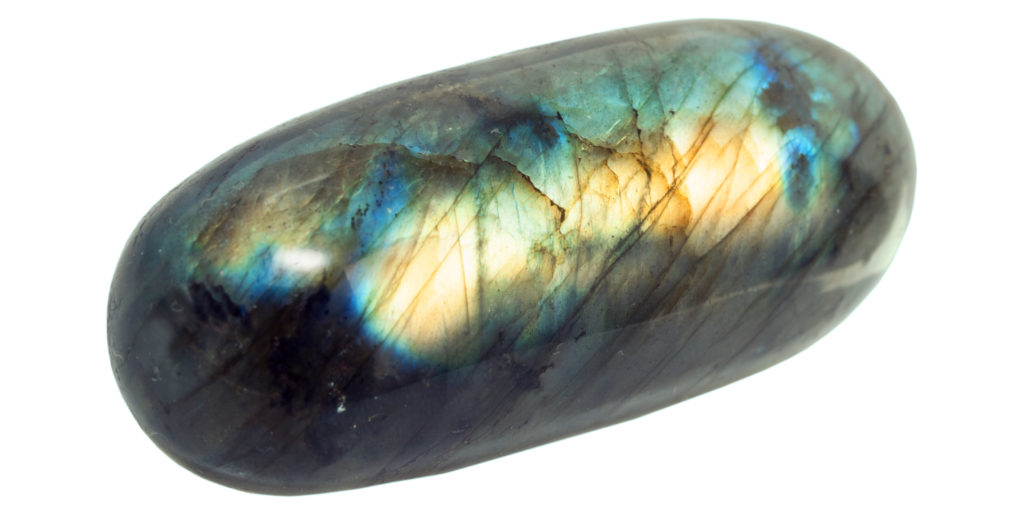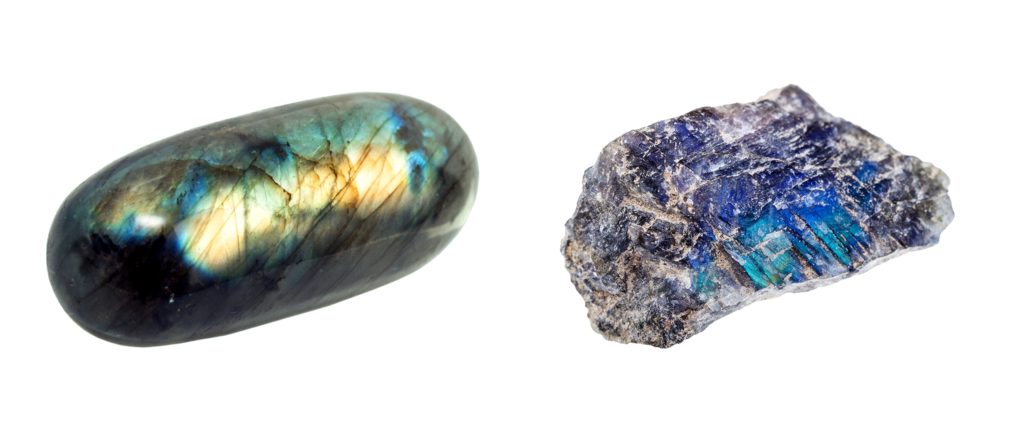Contents
The bluish to violet shimmering gem, Labradorite, is a mineral combination of albite and anorthite from the mineral class of silicates. Previously thought to be an independent mineral, today it is classed a plagioclase (feldspar).

The mesmerizing metallic sheen of the mineral is called labradorescence or iridescence. Labradorite gems are usually blue, green, or purple, but other colors do exist. For example, the Spectrolite, a rare variety of Labradorite, covers the entire color spectrum of labradorescence.
Fact sheet
Father Adolf, a Czech missionary on the Labrador Peninsula (Canada) first found Labradorite in 1770. Thus, the gem takes its name from the place of discovery.
The Finnish Geologist Aarne Laitakari (1890-1975) called the gem that reflects the full color spectrum in its metallic sheen, Spectrolite.
Labradorite’s colors range from clear or transparent, to white and dark gray, to blue and green. Normally, the gem has a metallic sheen and is blue, green or violet.
This metallic shimmering play of color is called labradorescence or iridescence. Furthermore, Labradorites that show a full spectrum of color are named Spectrolites.
Labradorite is no longer considered an independent mineral, but is counted among the plagioclases, which in turn belong to the feldspar or silicate mineral class. Its chemical formula is (Ca, Na) Al (Si, Al) 3O8.
The fascinating play of colors of the Labradorite comes in a round or oval cabochon cut.
Labradorites that are green or red are particularly valuable because they are extremely rare. One can usually find these in Oregon in the United States. Actually, these gems are a good financial investment, though the Labradorite price and value can vary. Currently, unpolished rough stones cost from about 24.20 $ per pound.
Loose stones or jewelry:
Generally, the value of gemstones always depends on their purity, color, cut and weight or carat weight (ct). Find out more about the quality features of gemstones.
- Spectrolite: a Labradorite from Ylämaa (Finland) that shimmers in all colors of the rainbow
- Rainbow Moonstone or Madagascar Moonstone: an almost transparent white Labradorite that has an intense blue glow.
The Labradorite gem rules the month of January and in addition, the star sign Aquarius.

